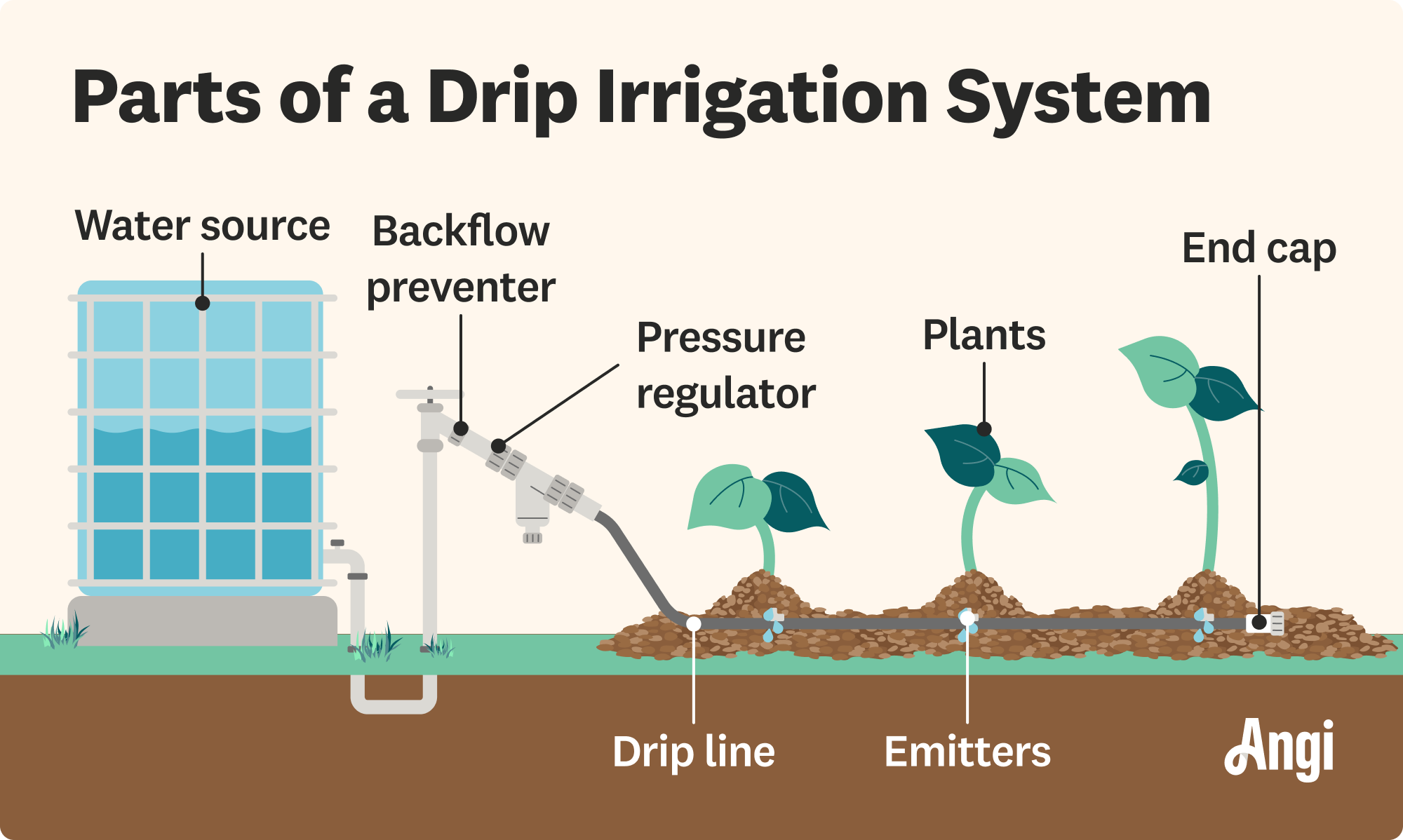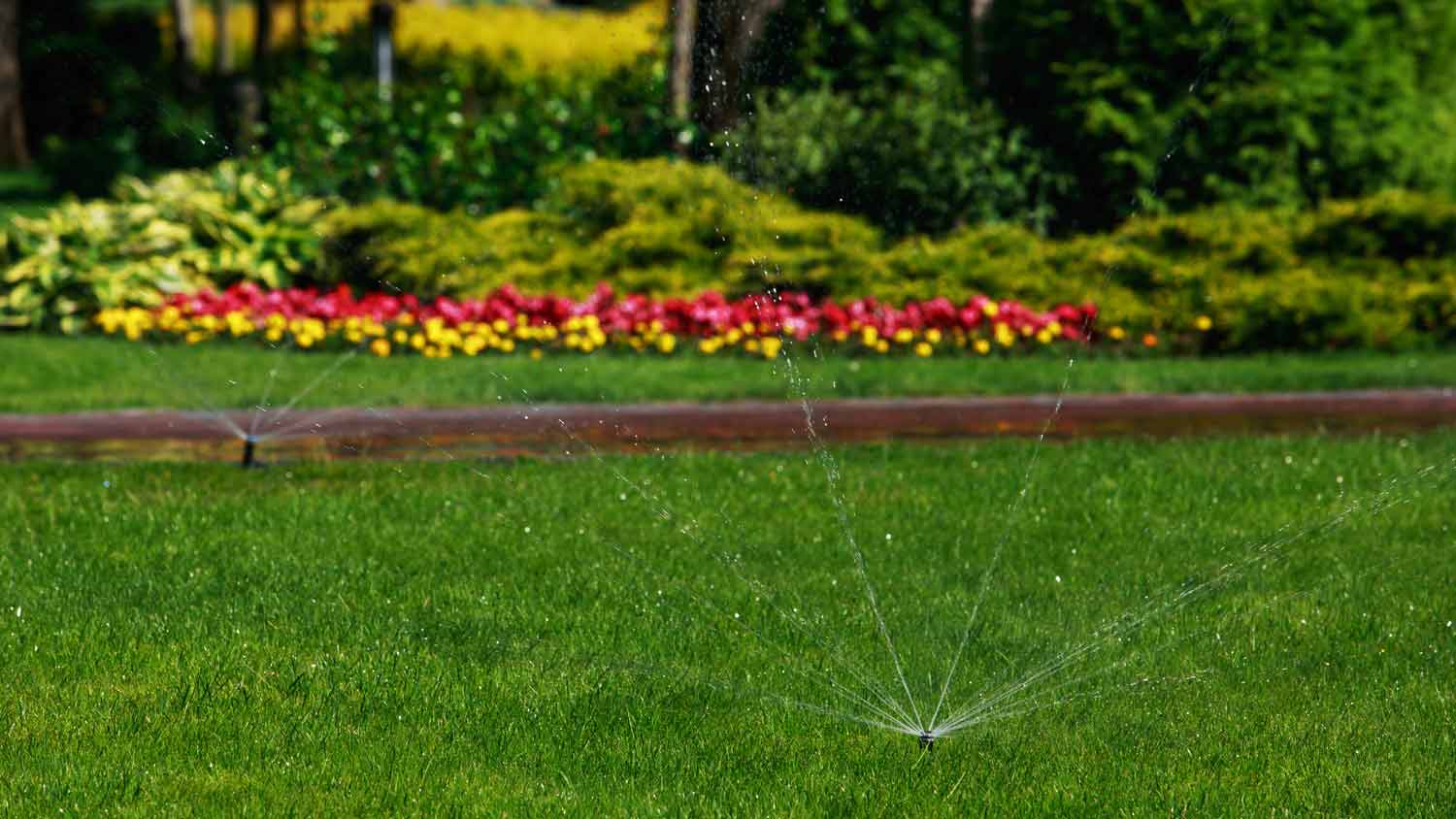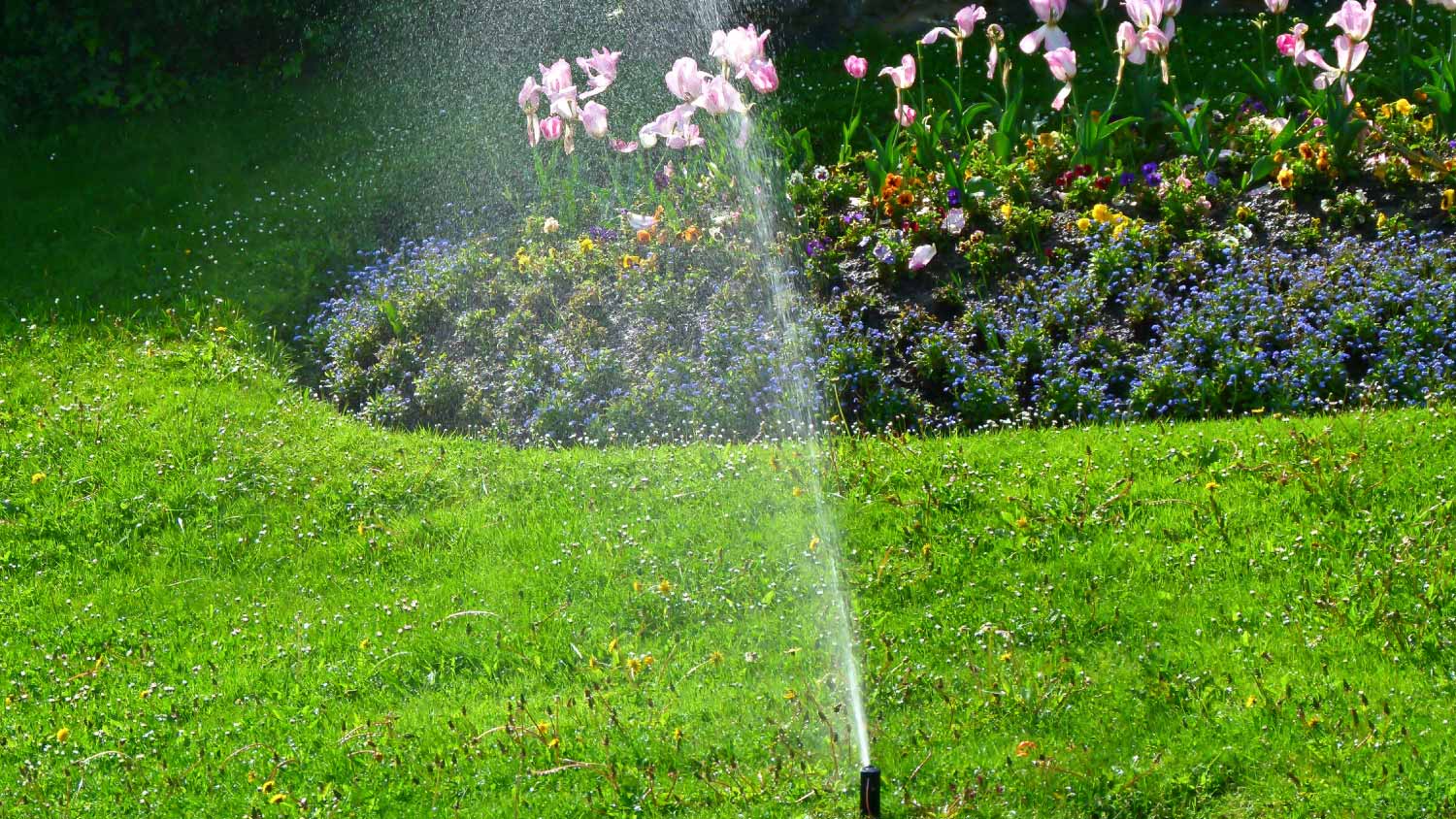What Is a Drip Irrigation System? Discover the Pros, Cons, and Costs
Slow and steady wins the (irrigation) race


Drip irrigation systems help you efficiently water your lawn, garden, or plants.
They have a system of tubes that distribute water to your plants’ roots.
You can install drip lines above or below the earth’s surface.
Drip irrigation is more efficient than many other types of irrigation systems.
It’s fairly easy to set up your own drip irrigation system, but hiring a pro may be worthwhile.
When you think about the different ways to water your lawn, what comes to mind? For many people, it’s probably a set of sprinklers that pop out of the ground or even a good old-fashioned garden hose. However, drip irrigation systems are another option—and they’re more efficient and eco-friendly than many other watering systems. Below, we’ll explain what a drip irrigation system is, how it works, and how it compares to other irrigation methods.
What Is a Drip Irrigation System?
Drip irrigation is a type of low-flow irrigation system for watering your lawn or garden. It uses a series of perforated tubes (called drip lines) to slowly and evenly distribute water throughout your yard. Unlike an irrigation system with sprinkler heads, a drip irrigation system delivers water straight to the plants’ roots, creating more efficient watering sessions and minimizing water waste.
How Does Drip Irrigation Work?

In a drip irrigation system, the tubes connect to a water source, like an outdoor faucet, which provides the water that goes into the drip lines. The tubes can either sit on top of the soil (above-ground or surface drip irrigation) or slightly beneath it (subsurface drip irrigation). Water gradually drips out of the holes in the tubes (known as emitters), so your plants’ root systems receive a slow but steady supply of water.
Drip irrigation systems are easy to customize, which is ideal if you have multiple types of plants with different hydration needs. In that case, you can create separate zones and watering settings to make sure everything in your yard gets the right amount of water.
Despite the similar names, a drip irrigation system isn’t the same thing as a drip distribution system, which is a type of septic system. However, if you have an aerobic septic tank, you may be able to build a septic sprinkler system to distribute your home’s wastewater back into your soil.
How Much Does a Drip Irrigation System Cost?

The price of installing a drip irrigation system depends on a few factors, including the size of your yard, the setup and components you choose, and whether or not you get professional help. However, hiring a pro to install a subsurface drip irrigation system on an average-sized lawn usually costs between $450 and $630.
If you’re on a budget and willing to take on a DIY project, you could save some money by installing your own system. Above-ground drip installation kits cost as little as $20 per 100 linear feet at home improvement stores.
Drip Irrigation vs. Other Watering Systems
While drip irrigation may work well for some homes, it might not be the best option for your property. Here’s how this watering system compares to other common irrigation methods.
| Type of System | Description | Cost |
|---|---|---|
| Drip irrigation | Controlled, automated watering directly on plant roots | $450–$630 |
| Automatic sprinkler | Zoned watering that covers large areas of landscape | $1,600–$3,600 |
| Underground sprinkler | Automatic sprinkler system with sprinklers buried in trenches underground | $1,700–$3,400 |
| Soaker hoses | Large-scale drip irrigation using just one hose | $50–$500 |
Drip Irrigation System Pros and Cons
If you need guidance on choosing a watering system, weighing these drip irrigation pros and cons can help you decide.
| Pros | Cons |
|---|---|
| Even, controlled watering | Higher up-front cost |
| Automated | May require pro installation |
| Reduces water waste | Regular maintenance |
| Limits soil erosion | Aboveground tubes vulnerable to weather and UV |
| Reduces plant disease risk | Vulnerable to pests and chemicals |
DIY vs. Hiring a Pro
If you’re a hands-on person, you can learn how to install drip irrigation yourself and knock out the project in an afternoon. It’s a pretty approachable six-step DIY task that includes mapping out a grid plan for the system, laying and cutting a main hose and feeder lines, and punching holes in the tubes.
With that said, there are some cases in which you might prefer to call an expert for drip irrigation installation. For example, if you have a sizable yard or a plant garden with special watering needs, you can save quite a bit of time, hard work, and hassle by reaching out to a local sprinkler installation pro. They’ll work with you to determine the best drip irrigation system for your space, whether that’s an above-ground or subsurface type.
Frequently Asked Questions
If you don’t currently have an irrigation system, cost is one of the biggest drawbacks of adding drip irrigation. You’ll likely spend several hundred dollars to set up your system. Plus, installation can be tricky—especially if you have a large or sloped yard. Drip irrigation systems also need ongoing maintenance, which you don’t really have to deal with if you’re just using a garden hose or portable sprinkler to water your lawn.
A drip irrigation system can last up to 15 years, depending on the condition of your yard and the quality of your system. However, certain components—including the drip lines and emitters—may wear down and need replacement before the overall system does. Scheduling regular sprinkler maintenance will help keep your system in good condition.
Yes, like other irrigation systems, drip irrigation requires ongoing maintenance. Some common maintenance tasks include identifying and patching up leaks in the tubing, unclogging emitters, and cleaning the filter. If you live in a cold climate, you’ll also have to winterize your drip irrigation system a few weeks before freezing temperatures hit. It’s a good idea to hire a pro to perform this routine maintenance—particularly if you have a subsurface drip irrigation system.





- Drip Irrigation Pros and Cons: What to Consider
- Drip Irrigation vs. Soaker Hose: Which Watering System Is Right for You?
- Spray Irrigation Pros and Cons: A Complete Guide
- How Irrigation Systems Work to Make Sure Your Lawn Is Happy and Healthy
- 9 Types of Drip Irrigation for a Healthy Lawn and Garden
- The Best Way to Water a Lawn Without a Sprinkler System
- How Do Irrigation Valves Work? Everything You Need to Know
- 9 Irrigation Tips To Save Water, Time, and Money
- How to Find Irrigation Valves When It’s Time for Maintenance
- Who Do I Call To Fix My Lawn Irrigation System?










